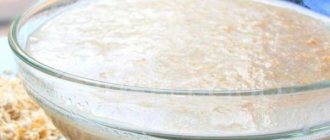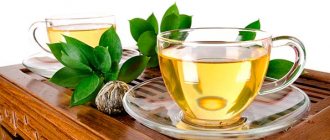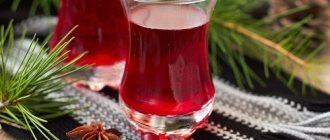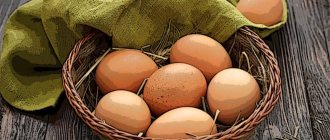Causes of stool color change
In those suffering from pancreatitis, the pancreas cannot regulate sugar levels through the synthesis of the hormones insulin, glucagon and C-peptide and produce the enzymes necessary for digesting food (trypsin, maltase, lipase, lactase).
As a result, the outflow of gastric juice slows down, the inflammatory process begins, food is not digested, which leads to its fermentation and rotting in the intestines. Feces with pancreatitis acquire special characteristics. Normally, the color of stool varies from brown to golden, the consistency is soft, and the weight ranges from 150 to 400 g, depending on the diet. Bowel movements occur painlessly 1-2 times a day. The process of defecation with pancreatic dysfunction is characterized by the following features:
- frequent urge to defecate (more than 3 times a day);
- feces come out in portions;
- liquid stool (up to 90% water);
- the presence of undigested pieces of food in the stool;
- the presence of fats, which is manifested in the shiny surface of the substance and poor rinsing from the walls of the toilet.
This is observed with diarrhea. If the patient suffers from constipation, then he has to deal with increased gas formation, bloating and cutting pain, and bowel movements may not occur for many days.
The process of defecation becomes painful and can provoke anal fissures; in this case, the feces will contain blood.
The color of stool during pancreatitis varies depending on the stage and severity of the disease. A dirty gray, almost pearlescent color is characteristic of the period of exacerbation or chronic pancreatitis. With a lack of bile, it turns greenish. A light, sometimes white color is observed in children. There is also a special stench of feces.
Painful discomfort under the ribs an hour after eating fatty foods, salty, fried, spicy foods indicates clear signs of illness. The main symptom is accompanied by other symptoms that appear:
- itching;
- increased formation of gases;
- intoxication;
- fermentation in the intestines;
- flatulence.
The acute type in patients with pancreatitis is often characterized by the presence of constipation. This indicates the development of pathology observed in the pancreas.
Reasons for the development of prolonged diarrhea in chronic pancreatitis.
- As a result of pancreatitis of alcoholic origin, the digestive system is weakened by toxins and is unable to cope with its purpose.
- Changes in intestinal microflora lead to the development of dysbiosis.
- There is an acute deficiency of enzymes that are required for food to be fully digested.
- The intestinal lining is disrupted.
The color of stool during pancreatitis will indicate what is happening to the body.
Stool with pancreatitis directly depends on the stage of the disease and concomitant diseases. The most obvious violations occur during the period of exacerbation, the feces acquire a gray color with a pearlescent tint. This disease is complicated by constipation, indicating an inflammatory process in the digestive tract.
After the transition of acute pancreatitis to chronic pancreatitis, diarrhea overtakes a person. Loose stools can be explained by several reasons:
- in the case of pancreatitis of alcoholic origin, the digestive tract, weakened by toxins, cannot cope with its functions;
- Disturbance of microflora entails the appearance of dysbacteriosis;
- there is an acute shortage of enzymes necessary for complete digestion of food;
- intestinal motility is disrupted.
For an adult who knows about his disease and has been to the doctor, it is important to adhere to all instructions. Since the treatment of pancreatitis is complex, neglecting one of the components can cause an exacerbation and, as a result, problems with bowel movements.
It is imperative to take enzyme preparations that stimulate digestion. If there is pain, you should not neglect analgesics or antispasmodics. This will depend on the nature of the pain. If the doctor prescribed vitamins, you need to take them too.
But the main thing is proper nutrition. This includes not only a balanced meal of proteins, fats and carbohydrates, but also a meal regimen.
- You need to eat at least 5-6 times a day.
- Portions should be small.
- Only lean meat is used for cooking. It is finely chopped or ground.
- Puree is prepared from hard vegetables.
- The amount of liquid is also important for normal feces, so you need to drink at least 2 liters of clean water per day.
You need to give up:
- Fat.
- Fried.
- Spicy.
- Overly salty and spicy.
- Confectionery, especially with creams, chocolate or cocoa.
- Alcohol and tobacco consumption.
- Be careful with vegetables that cause bloating (cabbage, turnips, radishes, legumes, mushrooms) and sour fruits and berries.
You can’t eat fresh bread; you should dry it in the oven or use yesterday’s bread. It is impossible to quickly normalize stool during pancreatitis with the help of diet alone, but consuming yoghurt or kefir will restore the intestinal microflora.
It is better to use homemade fermented milk products. Store-bought ones do not always contain a sufficient number of microorganisms. You definitely need to watch the fat content. For patients with pancreatitis, low-fat kefir or yogurt is better, but 1% can also be eaten if the doctor allows it.
Principles of pancreatic examination
It is immediately worth paying attention that diagnostics must be carried out in a complex manner. The pancreas is a large gland
In addition to its unique structure, it also has unique functions. It is this organ that performs one of the main functions when digestion is carried out. It produces enzymes that are required to break down proteins and fats into substances that enter the blood and nourish cells.
The pancreas is a large gland. In addition to its unique structure, it also has unique functions. It is this organ that performs one of the main functions when digestion is carried out. It produces enzymes that are required to break down proteins and fats into substances that enter the blood and nourish cells.
It is surrounded by kidneys on both sides, and in front is the stomach, transverse colon and duodenum.
If a certain volume of the gland is damaged, the remaining tissue replaces its functions. Therefore, a person may not detect any symptoms of the disease. But it may also happen that a small area becomes inflamed. This will not be noticeable in the structure of the entire gland, but pronounced changes in the function of the organ may appear. Therefore, methods for studying the pancreas should be carried out in a complex manner.
The structure of the pancreas.
Healthy human feces
Whatever lifestyle a person leads, in medicine there are standards regarding his waste products:
- ratio of dense particles and water 20/80%;
- stool frequency at least once every two days;
- bowel movements should occur easily, without causing discomfort;
- the average stool volume of a healthy person is 150–400 grams per day;
- the feces should be cylindrical in shape and light, contrary to the popular joke that the feces of a healthy person sink, slowly sinking to the bottom.
A healthy lifestyle is the key to good health. Active people who play sports rarely experience bowel problems
Classification
Chronic pancreatitis is classified
- by origin: primary (alcoholic, toxic, etc.) and secondary (biliary, etc.);
- according to clinical manifestations: pain (recurrent and constant), pseudotumorous (cholestatic, with portal hypertension, with partial duodenal obstruction), latent (clinical unexpressed) and combined (several clinical symptoms are expressed);
- according to the morphological picture (calcifying, obstructive, inflammatory (infiltrative-fibrous), indurative (fibro-sclerotic);
- according to the functional picture (hyperenzyme, hypoenzyme), according to the nature of functional disorders they can distinguish hypersecretory, hyposecretory, obstructive, ductular (secretory insufficiency is also divided according to the degree of severity into mild, moderate and severe), hyperinsulinism, hypoinsulinism (pancreatic diabetes mellitus);
Chronic pancreatitis is distinguished by the severity of the course and structural disorders (severe, moderate and mild). During the course of the disease, there are stages of exacerbation, remission and unstable remission.
What to do to fix the problem
An accurate diagnosis can be made using blood, urine, stool and ultrasound tests. If the doctor is sure that he is dealing with pancreatitis, then the first thing to do is take control of the patient’s diet. To improve the situation, you should follow some rules:
- reduce your coffee consumption and avoid instant coffee altogether;
- stop smoking and drinking alcoholic beverages;
- avoid overeating;
- reduce portion sizes, but eat more often;
- do not mix proteins and carbohydrates in one meal;
- limit the consumption of certain types of food (fatty, salty, smoked, sour, fried, sweet);
- give up carbonated drinks;
- reduce the proportion of citrus fruits in the diet;
- introduce cereals, whole grain bread, fermented milk products, fresh vegetables and fruits (exclude turnips, onions, garlic, horseradish, legumes from vegetables);
- The most acceptable type of food processing is steaming.
It’s worth paying attention to your lifestyle in general. A patient with pancreatitis needs to monitor his water balance: the volume of fluid drunk should exceed the norm for a healthy person, i.e. more than 2 liters per day. Walking in the fresh air and moderate physical activity are encouraged.
Depending on the specific case, the doctor selects medications. First of all, he focuses on what the cause of the disease was. A course of sedatives may be required if the patient is under stress. To normalize stool using an enema, agents are prescribed that restore intestinal microflora.
Today, a person of any age is diagnosed with pancreatitis. A factor in this is poor nutrition and an unhealthy lifestyle. To reliably diagnose pancreatitis, the patient needs to undergo a series of examinations. Particular attention is paid to the study of excrement. Feces with pancreatitis have a mushy type.
When the patient has a bowel movement, stool due to pancreatitis does not come out completely. In the structure of feces, fatty acids, muscle fibers, connective tissue, and starchy grains are observed, this indicates a lack of enzymes that produce normal digestion. Undigested fats in stool during pancreatitis lead to frequent visits to the bathroom. Often the consistency of stool is liquid or foamy. The number of trips to the bathroom per day is 4 times.
If you have diarrhea, it is important to follow a diet and avoid fatty, fried, smoked, and grilled foods. Fatty meat should be replaced with dietary meat and consumed only in pureed, chopped form, and low-fat sour dairy products should also be eaten. It is worth giving up confectionery, baked goods, honey, jam, radishes, garlic, onions, fresh bread, chips, hot crackers, sushi, and fast food.
Diet and nutrition principles
If the exacerbation of chronic pancreatitis is quite serious and is accompanied by severe pain, persistent vomiting, and significant changes in laboratory tests, then patients need to starve.
It allows you to provide the inflamed organ with maximum rest and minimize the production of aggressive enzymes by the gland that destroy the organ. Its duration depends on the specific clinical case, but most often ranges from 1 to 3 days. Sometimes during the “hungry” phase it is allowed to drink rosehip decoction, alkaline mineral waters, and weak tea.
Then a special low-calorie diet (up to 2200 kcal) with a normal protein quota is prescribed. It is designed to spare the pancreas and other digestive organs as much as possible. The features of this diet are:
- exclusion of all products with a high content of extractives or essential oils (fish, meat broths, cocoa, coffee, etc.), fresh berries, vegetables, herbs, fruits, sour juices, carbonated drinks, marinades;
- ban on fatty foods (lamb, pork, cream, lard, etc.) and alcohol;
- fractional consumption of food (up to 6 times);
- chopping or mashing used products;
- salt restriction;
- dishes are served exclusively warm;
- widespread use of slimy cereal soups, vegetable puree soups with added boiled meat, soufflés, protein omelettes, fish and meat dumplings, steamed cutlets, meatballs, baked apples, vegetable purees, jellies, mousses, dried white bread, low-fat cottage cheese, jelly.
Subject to clinical and laboratory improvement, nutrition is expanded, increasing its calorie content and the amount of proteins needed for a speedy recovery. Although the set of acceptable foods is very similar to the already mentioned diet, the list of dishes on the menu increases (baking is allowed). If pancreatitis is accompanied by the development of diabetes, then white cereals, potatoes, honey, sweets, and baked goods are added to the forbidden food list.
Pancreatitis, why does stool change?
Stool with pancreatitis directly depends on the stage of development of pancreatitis, as well as adjacent pathologies. During an exacerbation of the pathology, the patient’s stool is dirty gray, pearlescent in color. Brown gamma stool indicates changes in diet, yellow substance is observed in childhood when children are breastfed.
However, during the course of treatment, yellow stool is also observed due to the use of antibacterial drugs. The feces themselves are similar in structure to soft plasticine. Such changes will cause the development of other pathologies.
When digestion is disrupted, stool becomes diluted. Due to intense interstitialization, feces acquire a mushy consistency, and fermentation leads to a foamy texture of feces.
The feces may become lighter in color, which is a warning sign that bile is accumulating in the gland. The feces become viscous, are not completely washed off and have an unpleasant odor.
When acute pancreatitis becomes chronic, a person develops loose stool.
Character of stool in chronic pancreatitis.
- Ribbon-shaped appearance - indicates a painful phenomenon in the sigmoid colon. This feature of feces indicates the appearance of a tumor formation or the presence of sphincter spasms.
- The shape of sheep stools resembles dark colored balls. Such stool is observed when a chronic form of constipation or ulcerative pathologies develops.
- The shape of the sausage shows that the person has consumed foods of plant and animal origin in normal quantities.
- Shapeless feces - appears in people who eat a vegetarian diet, which indicates the consumption of foods containing a large amount of plant fiber.
Diarrhea is the main unpleasant symptom of pancreatic disease. The stool is disrupted due to undigested food, as a rule, already in chronic pancreatitis, a severe course of the disease. With loose stools, the patient complains of bloating, nausea, colic, vomiting, and heartburn.
A diseased pancreas does not cope well with the production of enzymes, which leads to inability to digest the food consumed, or after the patient has eaten protein, starch-rich food. For example, meat and bread are difficult to digest even for a healthy pancreas, let alone a sick one. Heavy food leads to rotting, fermentation in the intestines, diarrhea, and stool disturbance is inevitable.
Constant flatulence
If you have problems with the gastrointestinal tract, you should not immediately eat foods rich in proteins, fats, carbohydrates and starch. This suggests that a diet for pancreatitis is simply irreplaceable. Neglecting it means once again experiencing problems with stool passage. Usually the diet for pancreatitis is protein. But if it has led to fermentation in the intestines, then protein-rich foods should be eaten separately, without combining them with other incompatible foods.
For example, the pancreas will cope easier and process food better after eating boiled beef with a glass of warm milk, but without bread. Eating bread in this case will lead to fermentation of meat in the intestines, proliferation of bacteria, and bloating. Liquid stools with a specific odor are provided.
Dysbacteriosis or fermentation in the intestinal walls interferes with the complete absorption of vitamins and microelements supplied with food. With pancreatitis, patients sharply lose weight, do not eat enough, although they eat often, heartily and variedly, because they experience a lack of nutrients and vitamins in the body.
If the pancreas is not working well, then it is quite natural that the stool will have a consistency, color and substance that will be different from normal. The laboratory must pay attention to these indicators. The diagnosis of pancreatitis can be made:
- If the stool has a liquid or mushy consistency. Inclusions of fat or undigested fiber can often be seen.
- The color of stool with pancreatitis is very different from normal. It may be gray or gray-green during remission, or have a pearlescent tint during exacerbation.
The shape of feces can also be different:
- Shapeless - may indicate diarrhea or the fact that a person mainly eats plant foods.
- Resembling a ribbon - raises suspicion about the development of a tumor, partial spasms of the sphincter or the sigmoid colon.
- The cylindrical shape suggests that the amount of plant and protein foods is approximately equal.
- Feces with pancreatitis, which look like hard dark balls, indicate frequent constipation, and sometimes can become symptoms of a peptic ulcer.
Another symptom associated with stool is odor. Stool with pancreatitis has a very pungent and putrid aroma. This is due to the fact that food debris lingers in the intestinal cavity for a long time and begins to ferment and rot.
Type and features of the chair
When studying pancreatitis as a disease, special attention is paid to the format of stool, since in combination with color it is possible to draw appropriate conclusions about the course of the disease and the general condition of the patient. Pancreatitis refers to diseases that can negatively affect the health and internal organs of patients during their course, regardless of the person’s age and gender.
Digestive processes, the disruption of which occurs due to a malfunction of the pancreas, are accompanied by various symptoms: increased gas formation, bloating, pain in the stomach. In addition to other types of research, experts especially advise paying attention to the condition of bowel movements, their frequency, color and format.
Shape of stool with pancreatitis
The format and substance of feces during pancreatitis can change; this feature makes it possible to prevent the further development of an unfavorable situation and determine the nature of diets that improve the overall picture of treatment. According to the characteristics, the format of stool is distinguished:
- In the form of a ribbon. Signal about ongoing changes in the sigmoid intestine. The appearance of spasms in the sphincter suggests the presence of neoplasms, which is the main cause of ribbon-shaped bowel movements.
- Ball-shaped. It is similar to goat (sheep) feces. This type of bowel movement is a warning about the possible occurrence of constipation.
- Formlessness. The reason for this format is the vegetarian way of eating fiber-rich foods.
- Cylindrical. This form of feces informs about the optimal combination of plant and animal foods, without disturbing the digestive process.
The normal ratio of substances in feces is the following:
- Density – 20-25%.
- The frequency of bowel movements is 2-4 times a day.
- The presence of moisture is 78-82%.
What does the presence of mucus indicate?
If mucus is contained in small quantities, this is not considered a pathology. Mucus is a necessary substance for transporting feces. When pancreatitis develops, the amount of mucus increases.
Important! An alarming signal is the presence of a large amount of mucus on the walls of the toilet.
This suggests that pancreatitis has strengthened its position and may be preparing to transform into a chronic form.
Sometimes excess mucus is due to the fact that in this way the body is trying to expel dangerous substances along with loose stools. He also tries to get rid of food processing residues.
What does the presence of blood indicate?
The appearance of blood in the stool is accompanied by the following symptoms:
- increased number of urges to urinate;
- weakness (combined with dizziness, headaches. Often a person feels tired even after a long rest. He always wants to lie down);
- nausea (sometimes turns into vomiting, which does not bring relief - the person still feels sick. The patient may vomit several times a day);
- pain during bowel movements (a person complains of abdominal pain. It can be either mild or quite sharp);
- a sharp drop in blood pressure.
Bloody impurities in the stool can signal the development of a dangerous complication - oncology.
But in 70% of cases, not everything is so bad. Blood in feces is formed due to the presence of cracks in the walls of the colon.
If acute pancreatitis has already been diagnosed, this symptom may signal its exacerbation.
What is pancreatic elastase?
Digestive dysfunction is the main symptom of diseases associated with inflammation of the pancreas.
The stool takes on a mushy consistency, and the urge to have a bowel movement appears after every meal.
There are a number of features of stool with pancreatitis:
- During antibacterial therapy, stool becomes yellow and resembles plasticine in consistency.
- With pancreatitis, the color of stool changes to gray or very light, and undigested fats add shine to it;
- Feces have a foul odor and become very viscous (it is difficult to wash off clothes and is difficult to wash off surfaces).
Lack of medical care or untimely initiation of treatment can lead to very unpleasant consequences, the basis of which is dehydration:
- weight loss;
- inflammation of the mucous membranes;
- anemia;
- acute lack of vitamins and minerals;
- insomnia;
- apathy against the background of permanent neurosis.
One of the most alarming symptoms of pancreatitis is black diarrhea. Any doctor, hearing such a complaint, will be seriously concerned about the patient’s condition, since this indirectly indicates internal bleeding. It is blood that can color stool black.
Sometimes black stool is the result of eating foods that contain dye. Activated carbon has the same effect.
Diarrhea, no matter what disease it is caused by, requires an immediate response, because it instantly leads to dehydration of the body and causes serious complications. For pancreatitis, a comprehensive approach is taken to solving this problem:
- prescribe medications;
- recommend strict adherence to a therapeutic diet;
- The use of traditional methods is allowed (with prior consultation with a specialist).
The treatment strategy for diarrhea always depends on the form of pancreatitis and the presence of concomitant diseases. Traditionally there are 2 ways:
- Oral. It consists of prescribing enzyme-containing drugs that facilitate the functioning of the pancreas (Creon, Pancreatin, Bifidumbacterin, etc.).
- Intravenous. Used in acute periods when immediate response is required. It is carried out in a hospital. Solutions of electrolyte salts are prescribed (Disol, Trisol, etc.)
When taking any medications, you should always strictly follow the instructions and prescription of the doctor.
Folk remedies
If the situation is not critical, and the doctor has approved the proposed method of treatment, you can try folk remedies. Traditionally, they consist of consuming decoctions of medicinal herbs.
A decoction of corn silks and other medicinal plants:
- take equal parts of corn silk, chamomile and calendula inflorescences;
- pour boiling water at the rate of 1 tbsp. herbal mixture per 1 glass of water;
- leave for 1 hour;
- consume half an hour before meals.
Mint decoction:
- take mint, elecampane and string in equal parts;
- pour boiling water at the rate of 3 tbsp. spoons of prepared herbal mixture per 0.5 liters of water;
- Seal tightly and leave for at least 1 hour.
Abnormal bowel movements during pancreatitis are common, but it is important to respond to it in time and consult a specialist. With timely treatment, you can get rid of this unpleasant symptom. In diseases associated with digestive dysfunction, one of the most important conditions for positive dynamics is the patient’s attentive attitude to changes in his body.
Modern doctors often rely on an indicator such as fecal pancreatic elastase to confirm inflammation of the pancreatic tissue - what is it? The unique proteolytic enzyme E1 is produced exclusively in the pancreas. It is necessary to break down protein molecules into neutral amino acids. E1 is found in gland secretions and feces.
Pancreatic elastase is present in feces in quantities that are 5 times higher than its concentration in digestive juice. It does not change as it moves through the gastrointestinal tract, therefore it is used to assess the viability of the exocrine function of the pancreas.
Elastase does not depend on the use of enzymatic drugs. This treatment increases the activity of another protease, chymotrypsin, but does not affect E1. Focusing on the level of elastase allows you to more accurately prescribe enzymes for replacement purposes and predict the outcome of the disease. The norm of pancreatic elastase is determined within the range of 200 - 500 mcg per 1 g of feces.
With pancreatic secretory insufficiency, E1 activity in stool decreases. This can happen not only with chronic pancreatitis, but also with cancer, decompensated diabetes mellitus, cholelithiasis, and cystic fibrosis. In inflammatory diseases and intestinal infections, the E1 level does not change. The specificity of the research method and its sensitivity are at least 95%.
https://www.youtube.com/watch?v=sjVLKPYF7vE
Preparation for submitting stool for pancreatic elastase includes several simple requirements, namely:
- on the eve of collecting material, you should not use rectal suppositories of any composition;
- on the day of the study there is no need to do a cleansing or medicinal enema;
- 3 days in advance, stop taking laxatives, stop taking medications containing belladonna;
- feces need to be collected after natural stool in a clean plastic or glass container with a lid, 10 g of feces is enough;
- be sure to prevent urine and genital secretions from entering the container;
- You can take food and enzyme preparations before collecting feces;
- Stool analysis cannot be done within 1-2 days after an X-ray examination of the intestine with a contrast agent.
Depending on what pancreatic elastase shows, the doctor will determine the diagnosis. To confirm enzymatic deficiency of the gland, one stool sample is sufficient. In dynamics, you can track the course of the disease and the effectiveness of treatment.
Evaluation of results
The ideal value is considered to be the average value between the lower (200 µg/g) and upper (500 µg/g) limit of normal.
This indicates a good physiological and functional state of the pancreas. What are the possible analysis options for pathology:
- Pancreatic elastase more than 500 mcg g of feces is hypersecretion. It is manifested by constant diarrhea, rumbling in the intestines, bloating, cramps and pain in the abdomen, and weight loss. This happens in acute pancreatitis, oncology, and inflammation of the gallbladder.
- An E1 level below 150 mcg is a hypofunction of the gland, which is observed in patients with chronic pancreatitis, hepatitis or cancer, in children with cystic fibrosis, in patients after gastrectomy. Clinically manifested by constipation, putrid odor of feces, abdominal pain, frequent nausea and vomiting.
- Values close to the upper or lower limits are usually regarded as an error. At the same time, patients are recommended to do a repeat stool test in compliance with all requirements.
If you experience abdominal pain and a persistent change in the nature of your stool, you must consult a doctor and undergo an examination. It’s easy to remember what color stool is with pancreatitis. As well as detecting disorders of the pancreas using tests. It is enough to test feces for coprogram and elastase E1. If necessary, the specialist will prescribe additional types of studies.
How is the chronic form determined?
Laboratory diagnosis of pancreatitis involves the following tests:
- REA;
- blood test (general);
- effusion study;
- blood glucose levels;
- duodenal contents;
- determination of cholesterol levels;
- bilirubin concentration;
- amylase content (not only blood is examined, but also urine and saliva);
- trypsin and lipase activity;
- stool analysis.
Additionally, a test for tumor markers is taken.
Note! You cannot eat on the day of testing for chronic pancreatitis. 3 days before the procedure you need to give up everything spicy, fatty and fried.
If you only need to determine the glucose level, then you should eat your usual food. There is no need to limit yourself in anything.
Color of feces with pancreatitis
Pancreatitis is a disease that leads to a change in the natural functioning of digestion. A lack of enzymes contributes to a negative effect on all organs, and the color of the excrement will allow you to determine the real violations.
After eating foods prohibited for consumption, the patient experiences indigestion, which is accompanied by a condition where a process of decay and fermentation develops. Fatty meats, fish, lard and other products lead to negative consequences, changing the color of stool in the pathology of pancreatitis.
Green stool with pancreatitis indicates an exacerbation of changes in exocrine function. This situation is characteristic of the chronic type. In addition, green stool will occur when stagnation of bile develops and the release of the substance into the stomach increases.
If, in addition, signs of painful discomfort and stool disorder are formed, then light-colored feces clearly indicate pancreatitis. Light color appears when taking medications or due to infectious manifestations.
If a patient has pancreatitis, doctors advise carefully monitoring the color of feces. A dangerous sign of pancreatic disease is black feces. It signals the formation of serious diseases. This often indicates the presence of internal bleeding. It happens that the cause of blackness is in taking certain medications - activated carbon. Dangerous impurities are observed in the stool, which is a reason to consult a doctor.
It is normal for there to be a small amount of mucus as it is necessary for the stool to move easily. When pancreatitis forms, the volume of mucus can increase. When obvious marks remain on the toilet, this is a reason to think about it.
Mucus in feces occurs when enzymes are too active. When a painful phenomenon occurs, the gastrointestinal tract attempts to stop it thanks to mucus, as a result of which it is excreted from the intestines along with excrement. This cleanses the body of toxins and prevents the organ from becoming inflamed. A large volume of mucus also indicates other diseases, which are taken into account.
The presence of blood in feces during pancreatitis is considered the most negative cause, which is characterized by the following situations:
- the presence of formations in the digestive tract;
- wounds and ruptures in the walls of the large intestine appear;
- the presence of inflammatory phenomena that have progressed to the acute stage;
- There are areas that bleed.
If a patient develops the following symptoms, doctors advise immediately going to the hospital.
- Symptoms of itching and burning, blood in excrement.
- Nausea.
- Weakness.
- Painful sensations during bowel movements.
- Rapid drop in pressure.
- Feces come out in large volumes.
- Temperature increases.
Until the cause of blood in the stool is determined, you should not eat foods that are difficult to digest. It is forbidden to include fatty, spicy, smoked foods in the diet for pancreatitis.
How to restore intestinal microflora?
Restoring the microflora
In case of diarrhea, nausea, bloating, loose, foul-smelling stools, it is important to restore the intestinal microflora. Constipation is possible, so first of all you need to remove all feces and cleanse the intestines completely by performing an enema:
- dissolving 1 tbsp. l. preferably sea salt in hot water (2 liters), adding baking soda (1 liter);
- cooling the composition to 38 degrees;
- giving an enema.
It is advisable to repeat the washing procedure 2-3 times a day. An enema is given for up to 5 days in a row. After the intestines are washed, the doctor will prescribe probiotics to reproduce and retain beneficial microflora. Loose stools will disappear after the intestines normalize their activity.
In addition, it is important to take enzyme and multienzyme preparations with food to normalize digestion and treat diarrhea at home. For pain in the pancreas and swelling, the doctor will prescribe antispasmodics and cold compresses. In severe cases of chronic pancreatitis, during periods of exacerbations that provoke diarrhea, it is possible to prescribe surgical treatment to stop destructive changes in the pancreas through intravenous administration of painkillers, insulin injections and even plasma transfusions.
- Is it possible to drink glycine if you have diabetes?
- What meat can you eat if you have pancreatitis? What not to eat if you have pancreatitis
- Pancreatitis: symptoms and treatment in adults. Diet: what you can and cannot eat with pancreatitis
- Pancreatitis. Milk for pancreatitis Is it possible to have milk, kefir, cottage cheese for pancreatitis?
Is green really safe?
In the absence of any changes in the diet of a person suffering from inflammation of the pancreas, the stool should always be the same. If the stool suddenly turns green, this clearly indicates the presence of bile in it. In such cases, you should immediately inform your doctor, who will prescribe a therapeutic diet. In addition, the following measures should be taken:
- exclude fatty, fried, smoked, any types of canned food, sweets;
- completely avoid alcohol, coffee and carbonated drinks.
Only a doctor can definitely dispel doubts. In addition to diet, it is necessary to use medications that can only be prescribed by a specialist, based on test results.
What does a stool test tell you?
When digestion is impaired due to pancreatitis, changes in stool occur. Diagnosis of pancreatitis may reveal changes such as:
- undigested food residues in feces;
- fat found in feces;
- if bile is not excreted, the stool becomes lighter or white.
Microscopic examination of stool.
Such changes in stool are recognizable to the naked eye. For example, such feces stick to the walls of the toilet and are difficult to flush away. There is a strong foul odor due to rotting food resulting from poor bowel function.
There are other tests to detect pancreatitis:
- Detection of immunoreactive trypsin (used infrequently, as it detects other diseases).
- Detection of trypsin inhibitors (a low ratio indicates a worsening of the disease).
- Detection of trypsinogen in urine (gives an almost 100% guarantee of the accuracy of the diagnosis, but it is expensive).
Measures to normalize the color of stool
To get rid of diarrhea, adhere to the treatment table, which is recommended by the doctor. Patients with pancreatitis always need a special diet. Often, diet No. 5 is used to treat the pancreas.
If there is mucus in the feces, the patient is prescribed hospital treatment or surgery. The laparoscopic method is often used.
To prevent a radical method, restoration of the intestinal microflora is required, which is carried out using enemas. The procedure is carried out up to 3 times a day for about 5 days. After cleansing, you need to drink probiotics, products that contain bifidobacteria and lactobacilli.
The process of normalizing stool includes therapeutic measures with medication.
- Analgesics.
- Antibiotics.
- Painkillers.
- Vitamins.
- Hormones.
- Calcium.
Since problems with bowel movements develop due to stress and emotional overstrain, the doctor will prescribe sedative medications.
To determine the sugar norm, you need to indicate your sugar or select your gender to get a recommendation, move the slider to the required level, click the show button.
The importance of the pancreas in the human body is difficult to overestimate. The endocrine function of this organ is associated with the production of polypeptides and hormones that regulate sugar metabolism (insulin and glucagon). The exocrine work of the gland is to synthesize enzymes for the digestion of fats (lipase), carbohydrates (amylase) and proteins (pepsin, chymotrypsin, elastase).
The pancreatic secretion enters the duodenum, where enzymes are activated under the influence of bile and gastric juice. Under certain unfavorable circumstances (diet errors, stress, alcohol abuse, injuries, etc.) this process can begin even inside the organ.
This leads to destruction of the parenchyma and the development of aseptic inflammation in the pancreas. Feces during pancreatitis can help in diagnosing this condition; it has a characteristic appearance, and its study in the laboratory allows one to assess the state of the exocrine function of the organ.
Symptoms
In the initial stages of the disease, pathological processes proceed sluggishly, often without manifestations. The first clinically significant relapse of chronic pancreatitis occurs when degeneration and regressive processes in the pancreas are significant. Symptoms of chronic pancreatitis include not only severe inflammation, but also manifestations of intoxication due to the entry of enzymes into the general bloodstream.
Typical signs of chronic pancreatitis:
- intense pain (pain attacks) are cutting or dull in nature, lasting regularly or in the form of attacks; sometimes the pain can put the patient into shock; pain during chronic pancreatitis is localized depending on the affected part of the gland - if the pain is diffuse throughout the peritoneum and lower back, the entire organ is completely affected; if the tail or head is affected, irradiation is noted in the cardiac region, epigastrium or right side;
- a rise in temperature and surges in blood pressure are directly related to intoxication processes; a rise in temperature to 38–39 °C indicates intense damage with possible bacterial complications or the formation of abscesses; pressure changes occur in a short time interval and worsen the general condition;
- change in the patient’s appearance - the face takes on a suffering look, the eyes become sunken, facial features become sharpened; skin color changes to pale gray with an earthy tint; small red spots (“red drops”) may appear in the chest and abdomen area;
- development of obstructive jaundice (due to blockage of the bile duct) with yellowing of the skin and eye sclera;
- painful vomiting, and after an episode of vomiting there is no relief; vomit consists of undigested food mixed with bile;
- attacks of nausea and hiccups in combination with belching of air; in addition, dry mouth may appear;
- stool disorder can manifest itself in the form of constipation or diarrhea: repeated loose stools in the form of a foamy, foul-smelling mass with an abundance of mucus are typical for a relapse of the disease; constipation with flatulence and bloating are characteristic of the initial stages of chronic disease;
- lack of appetite and weight loss due to the inability to fully absorb nutrients.
Chronic pancreatitis in adults can occur with a clear dominance of one or more symptoms. For some, the course of the disease is completely asymptomatic - the person does not suspect the presence of inflammation for several years. In other categories of people, the chronic form of pancreatitis is manifested only by dyspepsia with frequent diarrhea and emaciation. Pain-type inflammation is associated with frequent attacks of severe pain after errors in diet and alcohol intake. Rarely, the symptoms have a picture of pseudotumor inflammation with signs of cancer and simultaneous yellowing of the skin and eye sclera.
Blood in stool
The most dangerous symptom of pancreatitis, causing anxiety among doctors and fear among patients, is the presence of fresh blood in the stool. There may be several reasons for its appearance:
- tumor processes in the gastrointestinal tract;
- cracks and ruptures of the colon;
- acute inflammatory processes.
At the first detection of blood during a bowel movement, you should immediately consult a doctor, as this may indicate acute pancreatitis.
There are symptoms that, in the presence of bloody stool, should force you to immediately go to a medical facility:
- painful bowel movements;
- nausea, vomiting, dizziness;
- significant decrease in blood pressure;
- temperature increase.
Operation
To cure this disease, surgery is sometimes required. Indications for surgical treatment for chronic pancreatitis in adults include purulent complications, obstruction of the biliary and pancreatic tracts, stenosis, changes within the tissues of the gland, complex course, and other symptoms that are not amenable to conservative treatment.
The following types of surgical intervention are performed:
- sphincterotomy in the process of clogging the sphincter of Oddi;
- excision of stones in the ducts of the gland;
- opening and sanitation of purulent foci;
- pancrectomy;
- vasectomy, splanchectomy, partial excision of the stomach;
- removal of the gallbladder during complications in the large bile duct and gallbladder;
- a technique for creating circumferential bile outflows in order to reduce tension from the main pancreatic tracts.
Important facts about the disease
The pancreas can silently tolerate neglect for a long time. It begins to signal a disaster when the problem has already gone far.
In acute pancreatitis, the symptoms are vivid; they are caused by the entry into the blood of breakdown products of the tissues of the affected organ and the development of intoxication. This situation requires emergency medical attention.
Chronic inflammation of the pancreas can manifest itself with nonspecific signs (weakness, nausea, bloating, diarrhea), so patients are reluctant to visit a doctor. Periodically, exacerbations may occur, during which people are forced to go to a medical facility.
A person can suspect the presence of the disease himself if he knows what kind of stool occurs with pancreatitis. What an attentive patient should detect when examining a stool:
- consistency – shapeless liquid or semi-liquid gruel;
- color – gray-green or yellow stool with pancreatitis usually has a greasy sheen and is difficult to wash off with cold water in the toilet;
- smell – most often foul;
- additional inclusions - mucus, pieces of undigested food debris.
Prevention
In order not to find out how to treat chronic pancreatitis, it is necessary to take timely measures to prevent the disease, which includes:
- to give up smoking;
- avoiding the consumption of alcoholic beverages;
- diet;
- Regular preventive examinations by specialists.
Chronic pancreatitis should be treated under the supervision of a gastroenterologist. When the first signs described in the article appear, be sure to undergo diagnostics to make an accurate diagnosis.
Diagnosis of pancreatitis
One of the very first and most reliable tests prescribed for the diagnosis of pancreatitis is a coprogram.
At the initial stages, in laboratory conditions, they find out whether there are traces of undigested food in the stool, the presence of which indicates a lack of enzymes
Blood counts for pancreatitis
- before collection, try to avoid taking medications as much as possible;
- follow a therapeutic diet;
- collect feces in a sterile container;
- the material must be fresh (overnight storage in the refrigerator is possible);
- women undergoing analysis during menstruation must use a tampon, having previously carried out hygienic procedures.
A stool test for pancreatic elastase is a reliable way to determine whether inflammation of the pancreas is occurring and to what extent. The fact is that elastase is an enzyme produced by the gland, which, passing all the way through the gastrointestinal tract, does not change either qualitatively or quantitatively.
For a chronic disease, it is recommended to retake this test annually to monitor changes.
Causes of pancreatic diseases
At risk are all people who do not think about their daily diet, eat too much fatty foods, fried foods and overly spicy additives. To break down such food, the pancreas has to produce a huge amount of enzymes, which results in an increased load for it.
Alcohol abuse, on the contrary, leads to suppression of pancreatic function and insufficient production of enzymes. Also, the normal functioning of the gland is disrupted by stress.
But the most dangerous thing for a person is the development of cholelithiasis, in which a blockage of the duct with a stone can potentially occur and self-digestion of the gland can begin. In advanced forms of the disease, the gland digests both itself and the organs surrounding it, as a result of which the patient dies a painful death.
Pregnant women are also at risk of various pancreatic diseases. The development of pancreatitis may be preceded by trauma, inflammation of the duodenum, cirrhosis of the liver and metabolic disorders. All of the above leads to one important conclusion - if the doctor suspects pancreatitis, then it is necessary to immediately be examined and undergo a full course of treatment.
What is a coprogram and why is it needed?
A simple laboratory test such as a coprogram can confirm or refute the diagnosis. This is the first stool test that a doctor prescribes for a patient with complaints of digestive disorders; it is performed in any district clinic.
A scatological study allows you to obtain information about the functioning of various organs of the gastrointestinal tract, including the pancreas.
The patient is required to collect fresh material, place it in a clean glass or plastic container and deliver it to the laboratory. This must be done without prior dietary restrictions against the background of the usual diet.
Normalization of stool with diet
Abnormal bowel movements occur due to various factors, this can be the treatment of diseases using medications that affect the functioning of the gastrointestinal tract, improperly balanced foods, substances that can affect the digestion process and a number of diseases that manifest themselves in the same way. Doctors advise that in case of intestinal problems, adhere to certain rules and advice, as well as a special diet that will help normalize the situation with stool.
The rules themselves are not difficult to implement; the main thing is not to neglect or ignore them.
- The daily dose of water should be at least 2 liters, but it can also be another liquid, for example unsweetened dried fruit compote. Water or other moisture will help cleanse and remove any remaining substances that cause diarrhea from the intestines.
- Light regular walks and simple physical exercises must be present in the daily schedule.
- Eat foods containing fibers of natural origin: bran, cereals, dried fruits, which, like a sponge, will clean everything unnecessary from the surface of the intestinal walls.
- Ban eating shortly before bedtime.
- Do not eat a lot of food at one time: often a lack of enzymes negatively affects the digestion process.
- Rich broths, fried, smoked, salted and other foods are difficult for the stomach to accept; until normal functioning of the gastrointestinal tract is restored, it is advisable not to eat such products temporarily.
- In order to improve the situation, use a light abdominal massage, this will have a positive effect on the functioning of peristalsis.
The products that experts advise using for organizing dietary meals are easy to digest, have beneficial properties and are enriched with microelements and vitamins necessary for the body. When eating food, you need to do it slowly, and the dishes themselves should have a small dosage. Among the food products for restoring stool, you should pay attention to those that will help you do this in the shortest possible time:
- Products are rich in fiber, most of them are vegetables and herbs.
- Lactic acid products contain material for restoring beneficial microflora in the gastrointestinal tract.
- Natural honey.
- Flaxseed oil, this substance is a good remedy for constipation.
- Fresh juice, warm still water, dried fruit compote.
- Low-fat varieties of fish and meat.
Treatment of pancreatic loose stools
Pancreatitis is a complex disease that constantly negatively affects the functioning of the gastrointestinal tract and one of such manifestations is diarrhea. Treatment problems with stool are eliminated in three main ways:
- With the help of medications.
- The use of folk remedies.
- Using diet.
You can also use complex treatment, sometimes this method will give the fastest result with the least side effects.
How to treat with drugs
Any treatment that involves the use of medications requires consultation with a specialist, and given the complexity of the disease, which includes pancreatitis, it is advisable to do this regularly. Pancreatitis is an insidious disease, and its manifestation in the form of diarrhea is one of the main inconveniences that occurs against the background of inflammatory processes of the pancreas. Treatment of diarrhea is necessary not only because it is inconvenient, but also because of the dangerous effects on the body if left untreated:
- CNS disorders.
- Due to weakening, the body is practically not protected against other diseases.
- Metabolic disorders in the body.
- Sudden weight loss caused by dehydration.
- Vitamin deficiency, which causes necrosis of some organs.
When treating diarrhea due to pancreatitis, two types of drug treatment are suggested:
- Orally. For this purpose, preparations containing enzymes and bacteria are used to help the pancreas work: “Pancreatin”, “Bifidumbacterin”, “Creon”, “Lakatobacterin”.
- Drugs for intravenous administration. This type of medication is used by medical professionals in a hospital setting to treat an acute illness. For this purpose, preparations containing electrolyte salts in the form of solutions are used - “Trisol”, “Disol”, etc.
The drugs popular among the people have a good effect: “Mezim”, “Festal”, “Pangrol”, “Loperamide”; specialists purchase them, so to speak, in reserve when a symptom manifests itself suddenly and at the most inopportune time.
What should be the mass of feces?
In a healthy person, feces should consist of:
- from dense fractions – 20% of the total volume;
- from water - 80% of the total volume.
Every day a person should perform up to two acts of defecation, which should bring relief and not cause any discomfort or pain. With a balanced diet, the daily volume of feces should vary in the range of 150-400g, but if you eat a large amount of food of plant origin, this figure will increase.
If there is a large amount of fatty foods in the diet, the daily volume of feces will decrease. The normal consistency of stool is one that, when dropped into water, softly sinks to the bottom of the toilet. If a person’s feces stick to the toilet, the reason may lie in an incorrect diet, or in the development of pathological conditions in the digestive system, in particular in the pancreas.
In diseases of the gastrointestinal tract, stool masses acquire the following structure:
- Ribbon-shaped . Indicate problems in the sigmoid colon. Sphinctral spasm or the development of a neoplasm may be observed.
- Ball-shaped . This form of feces indicates the development of ulcerative lesions or chronic constipation.
- Cylindrical . Indicate the normal content in the intestines of food of animal or plant origin.
- Formless . Such stools are observed in vegetarians, whose menu includes foods containing a large amount of fiber.











